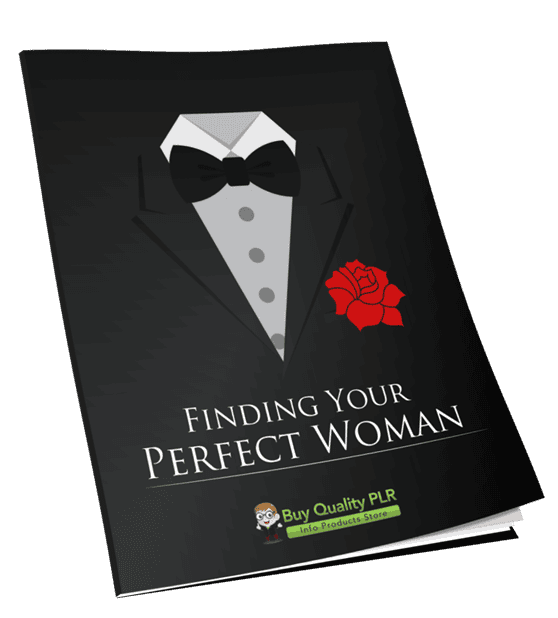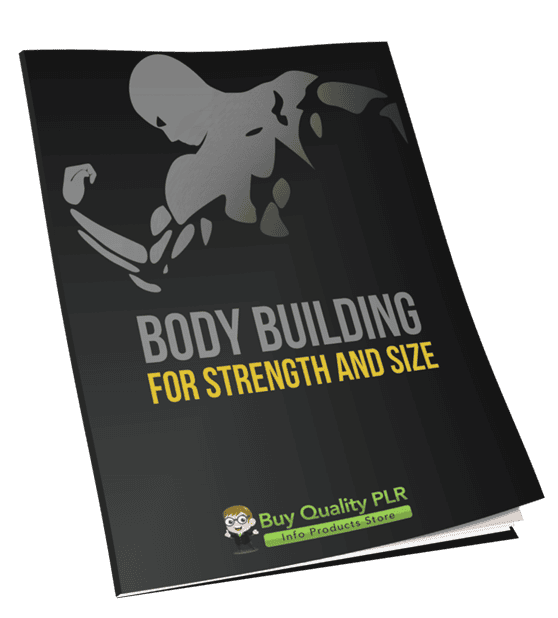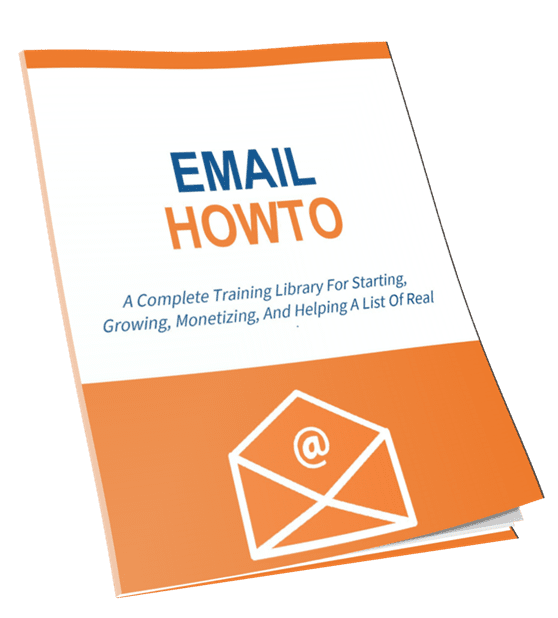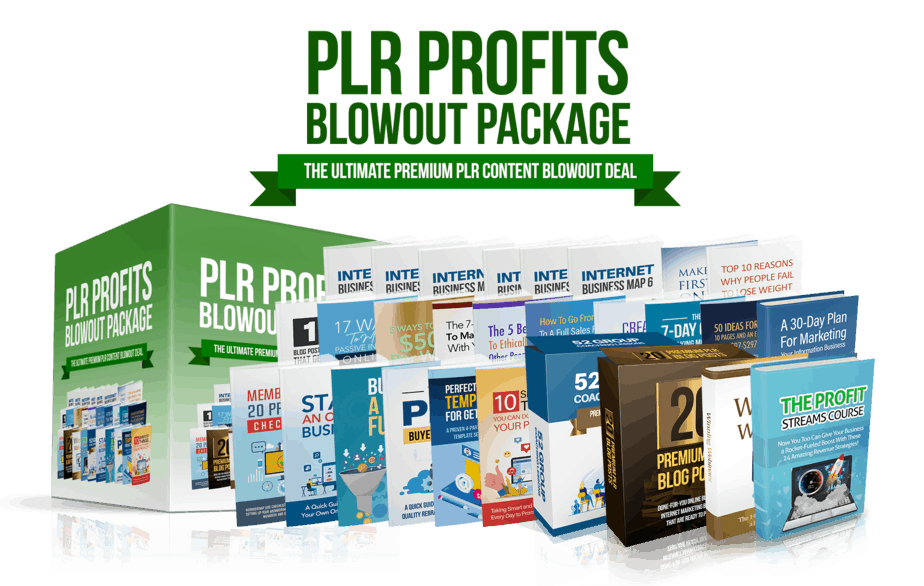
Finding Your Perfect Woman PLR Course 31k Words
in Dating PLR , Dating PLR Ebooks , PLR eBooks , PLR eCourses , PLR List Building Reports , Premium PLR , Premium PLR eBooks , Premium PLR Reports , Premium White Label Brandable PLR Coaching Courses , Private Label Rights Products , Relationships , Relationships PLR , Relationships PLR eBooks , Self Help PLR , Self Help PLR eBooksChoose Your Desired Option(s)
has been added to your cart!
have been added to your cart!
#datingplrcourse #relationshipadviceplr #findloveguide #plrformen #romanceplrcontent #datingtipsplr #mendatingguide #loveandrelationships #findinglovecourse #datingsuccessplr
Find Your Perfect Woman: A Step-by-Step Guide to Attracting and Building a Meaningful Relationship
Welcome to Finding Your Perfect Woman — an exciting and transformative course designed to guide you through every step of finding, attracting, and building a lasting relationship with the woman who truly fits your values, desires, and life.
Presenting…
Finding Your Perfect Woman PLR Course 31k Words
Course Overview
This course covers everything you need to know, from self-discovery to building lasting connections and making meaningful commitments. Whether you’re just starting your journey in the dating world or you’re looking to improve your approach to relationships, this course will provide you with practical strategies and expert advice.
By the end of this course, you will have a comprehensive understanding of how to build a meaningful relationship that is fulfilling, supportive, and rooted in mutual values. Let’s dive in and make your journey toward finding true love enjoyable, fulfilling, and authentic!
What You’ll Learn in This Course
Module 1: Self-Discovery – Knowing What You Want
Before you can attract the right person, it’s essential to understand yourself first. This module will guide you through understanding your personal values, needs, and what you truly want from a relationship.
Step 1: Clarify Your Values and Beliefs
- Reflect on the most important aspects of your life and relationships, such as honesty, trust, and ambition.
- Understand your non-negotiables and why they’re essential for a successful partnership.
Step 2: Identify Your Relationship Goals
- Be clear about your intentions: Are you looking for a serious commitment, casual connection, or companionship?
- Align your search with your relationship goals for a more focused approach.
Step 3: Assess Your Strengths and Areas for Growth
- Acknowledge the qualities that make you a great partner and areas where you can improve.
- Understand how being emotionally available and clear in communication can attract the right partner.
Step 4: Develop a Positive Mindset
- Cultivate self-love and self-worth to boost your confidence and make yourself more attractive.
- Learn to embrace a positive attitude towards relationships and trust the process.
Module 2: Building a Strong Foundation for Attraction
Now that you understand yourself, let’s focus on creating a strong foundation that attracts women to you both internally and externally.
Step 1: Improve Your Physical Appearance
- Learn the importance of grooming, dressing well, and maintaining personal hygiene to show you value yourself.
- Discover how improving your appearance positively impacts your attractiveness.
Step 2: Develop Your Communication Skills
- Master the art of listening and speaking with clarity. Engage in meaningful conversations to show genuine interest in others.
Step 3: Focus on Your Emotional Intelligence
- Work on understanding and managing your emotions to connect better with others.
- Learn how emotional stability and empathy are key factors in creating lasting relationships.
Step 4: Cultivate Your Passions and Hobbies
- Share your passions, whether it’s sports, arts, or travel. Demonstrating a rich and confident life can make you more interesting and relatable.
Module 3: Meeting the Right Woman
Now that you have a clear understanding of yourself and have built a solid foundation, it’s time to go out and meet potential partners.
Step 1: Join Communities Aligned with Your Interests
- Participate in groups or events where you can meet women who share your passions. Think about book clubs, fitness classes, or professional networking events.
Step 2: Be Active Online, But Keep It Genuine
- Online dating can help you meet like-minded women, but it’s crucial to be honest. Create a profile that reflects your true self and interests.
Step 3: Make the First Move with Confidence
- When you meet someone you’re interested in, approach her with confidence. Show genuine curiosity and respect as you initiate conversations.
Step 4: Be Patient and Trust the Process
- Don’t rush. Take the time to get to know each person. Trust that the right woman will come along when the timing is right.
Module 4: Building a Connection That Lasts
Once you’ve met someone you’re interested in, it’s time to develop a deeper connection. This module will teach you how to nurture and maintain a healthy relationship.
Step 1: Foster Open and Honest Communication
- Be transparent with your intentions and desires. Encourage your partner to be open and communicate clearly as well.
Step 2: Show Respect and Appreciation
- Show respect and appreciation for the little things she does, and always value her individuality and needs.
Step 3: Invest Time in Quality Experiences
- Strengthen your bond by spending meaningful time together, whether it’s through travel, cooking, or shared hobbies.
Step 4: Work Through Challenges Together
- Every relationship faces obstacles. Embrace challenges as opportunities for growth and work together to solve problems.
Module 5: Knowing When She’s the One
After building a strong foundation and connecting with someone special, it’s time to evaluate your relationship and decide if she’s truly the one for you.
Step 1: Assess Compatibility in Core Values
- Ensure that your long-term values align. While differences can add spice to a relationship, shared core values are crucial.
Step 2: Evaluate Emotional and Physical Connection
- Make sure you have both emotional support and physical attraction. A strong connection in both areas is vital for a lasting relationship.
Step 3: Trust Your Intuition
- Listen to your instincts. If everything feels right, trust your gut and take the next step.
Step 4: Take the Leap of Commitment
- If you’re ready, make a commitment to each other. Continue to support, grow, and nurture the relationship as partners in life.
Conclusion: Congratulations on Your Journey to Finding Your Perfect Woman!
By completing this course, you now have the tools and strategies to find, attract, and build a meaningful relationship with the woman who aligns with your life goals and values. Remember, this is just the beginning of your journey to finding true love. Keep these lessons in mind as you continue your adventure – love is not a destination but a lifelong journey.
Bonus Materials Included:
Along with the core course content, you’ll receive the following helpful bonus materials:
- Finding Your Perfect Woman Checklist
Word Count: 836 words
A helpful checklist to keep track of your progress throughout your journey to find the right partner. - Finding Your Perfect Woman FAQs
Word Count: 926 words
Answers to frequently asked questions, helping you navigate common challenges in your search for true love. - Finding Your Perfect Woman Sales Page
Word Count: 896 words
A customizable sales page template for promoting dating advice, relationship services, or courses like this one.
How to Use and Profit from the Course
The Finding Your Perfect Woman PLR Course comes with Private Label Rights (PLR), meaning you can rebrand, edit, and resell the content as your own. Here’s how you can profit from it:
- Resell the Course: Offer the course as a valuable resource for men looking to find and build meaningful relationships.
- Create Membership Sites: Build a membership site with weekly or monthly content related to dating, relationships, and personal development.
- Bundle with Other Products: Combine this course with other products or services you offer, creating value-packed bundles for higher sales.
- Create Digital Products: Turn the course into a digital product like an eBook or audio series and sell it online.
- Offer Affiliate Programs: Promote the course through affiliates who can earn commissions on each sale.
License Terms:
What You Can Do:
- Sell the content as-is or with minor edits.
- Break the content into smaller reports and sell them individually.
- Create a membership site, eclass, or online course.
- Convert the content into physical products like books or guides.
- Turn the content into videos, podcasts, or other digital media.
- Use parts of the content as lead magnets or blog posts.
What You Can’t Do:
- Pass on the PLR rights to your customers.
- Offer 100% affiliate commissions.
- Give away the full course for free in its original form.
- Add the course content to existing customer orders without additional purchases.
Start Your Journey Today!
The Finding Your Perfect Woman PLR Course is your guide to attracting and building a meaningful relationship with the woman who complements your life. With clear, actionable steps and expert insights, this course will empower you to make thoughtful, fulfilling choices in your journey toward love.
has been added to your cart!
have been added to your cart!
Here A Sample of Finding Your Perfect Woman PLR Course
Welcome to this exciting course, where we’ll walk through the essential steps to help you attract and build a meaningful relationship with the woman who truly fits your values, desires, and life. Let’s dive in and make the process enjoyable, fulfilling, and most importantly, authentic!
Module 1: Self-Discovery: Knowing What You Want
Before we can find the right person, it’s essential to understand ourselves first. This module will guide you through understanding your personal values, needs, and what you want from a relationship.
Step 1: Clarify Your Values and Beliefs
Before diving into the search for a partner, it’s important to understand what truly matters to you in a relationship. This step is about introspection—taking the time to reflect on your core beliefs, personal values, and the qualities that are non-negotiable for you.
Here’s how to get started:
- Set Aside Quiet Time for Reflection
Find a peaceful space where you can think without distractions. Grab a journal or open a notes app on your phone. This is your time to explore what you value most in life and relationships. - List Your Non-Negotiables
Start by writing down the values and beliefs that are absolutely essential for you. These could include things like honesty, trust, ambition, respect, kindness, or communication. These are the things that, for you, are a deal-breaker if they’re not present in a relationship. - Reflect on Past Experiences
Think about past relationships or your current interactions. What worked well? What didn’t? Were there any values that you felt were missing? This can help you pinpoint which values are truly important to you. - Identify Your Dealbreakers
Alongside your positive values, list things you absolutely can’t accept in a partner—such as dishonesty, lack of emotional availability, or a disregard for your career ambitions. These are crucial to recognize early on so you don’t waste time on someone who isn’t a fit.
Once you’ve clarified your values and beliefs, you’ll have a much clearer idea of what to look for in a woman. This reflection will guide your decisions and help you attract a partner who shares your fundamental principles.
Step 1: Clarify Your Values and Beliefs
Welcome to the first step of your journey in finding the perfect woman. This step, “Clarify Your Values and Beliefs,” is a crucial foundation not only for your relationship journey but also for personal growth. Before you can connect with someone on a deep level, it is essential to understand your own values, what you stand for, and the qualities you cannot compromise on. This clarity will help you attract and build a relationship with a woman who truly aligns with who you are at your core.
Here’s how to approach this process in a detailed, methodical way that will help you gain insight into yourself and guide you toward a successful and fulfilling partnership:
Step 1: Set Aside Dedicated Time for Reflection
The first thing you need to do is set aside uninterrupted time to reflect. This isn’t something you can rush through in a few minutes while multitasking. Reflection requires focus and a quiet, relaxed environment where you can dive into your thoughts without distractions.
- Find a Comfortable Space: This could be a quiet room in your home, a peaceful spot in a park, or any environment that allows you to think clearly. The goal is to ensure that you feel calm and focused.
- Gather Your Tools: You will need a journal, a notebook, or a digital device where you can take notes. Writing things down helps you organize your thoughts, and it gives you something tangible to look back on. You might also want to have a timer to give yourself a set amount of time (30 minutes to an hour) to reflect.
- Commit to the Process: Dedicate at least 30 minutes to this exercise, but feel free to spend more time if you need. Avoid checking your phone or engaging in any activities during this time. It’s important to focus entirely on yourself and your values.
Step 2: List Your Core Non-Negotiables
Once you’re settled, start by writing down the values and beliefs that are non-negotiable in a relationship. These are qualities or standards that you are absolutely unwilling to compromise on. Non-negotiables often include fundamental aspects that form the foundation of your worldview, and they can vary depending on your personal history, culture, and aspirations.
- Reflect on Personal Integrity: What are the core ethical or moral principles that are deeply important to you? For example, honesty, integrity, and respect may be non-negotiable for you. Ask yourself: “What behavior can I not tolerate in a relationship?”
- Consider Trust and Loyalty: For many, trust is the bedrock of any relationship. Think about whether you require complete loyalty, or whether other aspects, such as open communication, are equally vital. Do you value honesty above all, or do you find mutual respect to be more essential?
- Ambition and Life Goals: Think about your aspirations and how they relate to your partner’s values. Do you need someone who shares your drive for personal or professional success, or someone who can provide emotional stability? Ambition, motivation, and goal-setting are key in this area.
- Emotional Intelligence: Emotional maturity plays an important role in healthy relationships. Are you seeking someone who has a high degree of emotional intelligence, someone who is open to self-improvement and introspection, or is emotional stability your highest priority?
Step 3: Reflect on Past Experiences
Your past relationships and experiences are a rich source of information to help you identify what really matters to you. Take some time to reflect on these past connections—whether romantic or platonic—and analyze the things that worked well and those that didn’t.
- What Worked Well: Think about the positive aspects of your previous relationships. Did you feel most connected to partners who were supportive, affectionate, or empathetic? Did you thrive in relationships where independence was valued, or where there was a deep sense of shared purpose?
- What Didn’t Work: Now, consider the challenges or failures you’ve experienced. Were there particular values or beliefs that led to the breakdown of those relationships? Did lack of communication, misaligned priorities, or dishonesty create friction? Identifying what didn’t work is as important as knowing what did. This will help you avoid similar pitfalls in the future.
- Patterns and Insights: Look for patterns in your past relationships. Are there recurring themes or issues that come up? For example, do you tend to attract partners with certain characteristics, or do you find that some qualities are always present (or missing) in your connections?
Step 4: Identify Your Dealbreakers
Dealbreakers are qualities or behaviors you cannot tolerate in a partner. These are often more extreme than non-negotiables and are directly tied to your emotional well-being and long-term happiness. It’s crucial to recognize them early in the process to avoid investing time and energy in relationships that are unlikely to work.
- Consider Compatibility in Core Areas: Dealbreakers might involve incompatibilities in lifestyle, like differing views on marriage, children, finances, or career paths. Financial irresponsibility, lack of ambition, or unwillingness to compromise on key aspects of life are all potential dealbreakers.
- Reflect on Communication Style: Do you have a low tolerance for conflict or avoidance? Is your dealbreaker dishonesty, gaslighting, or a lack of respect in communication? Understanding the types of behavior that are unacceptable will give you clear boundaries in your future relationships.
- Respect Your Emotional Needs: Emotional neglect, disrespect, or an inability to express feelings can be dealbreakers for many people. Think about how important empathy, care, and emotional validation are for you in a relationship. If someone cannot meet these needs, it may be a dealbreaker.
- Personal Growth and Integrity: Do you require a partner to be committed to personal growth and self-awareness? Are you seeking someone who actively works on their mental and emotional health? Lack of accountability in these areas can also be a dealbreaker.
Step 5: Reassess Over Time
This is not a one-time exercise. As you grow and evolve, your values and beliefs might shift. It’s important to periodically reassess your list of non-negotiables, dealbreakers, and relationship priorities. Life experiences, professional growth, and personal evolution will naturally influence what matters most to you in a partner.
Conclusion
Clarifying your values and beliefs is the cornerstone of attracting the right partner. By identifying what truly matters to you and recognizing what you absolutely cannot compromise on, you are setting the stage for building a strong, lasting connection. This process helps you avoid relationships that may not align with your goals and ensures that you invest your energy into a partner who truly complements your life.
Step 2: Identify Your Relationship Goals
Welcome to Step 2 of your journey to finding your perfect woman! In this crucial step, we focus on identifying your relationship goals—a process that will help you gain clarity on what you truly seek in a romantic connection. Understanding your relationship goals is fundamental because it ensures that your search for a partner aligns with your intentions and personal desires. Without a clear vision, it’s easy to become confused or end up in relationships that don’t meet your needs.
Identifying your goals will give you the direction and confidence needed to pursue a relationship that is fulfilling and meaningful. In this step, we will walk you through a detailed, methodical approach to help you articulate and reflect on your relationship goals, so you can start your journey with clarity.
Step 1: Reflect on What You Truly Want in a Relationship
The first thing you need to do is think deeply about what you truly want from a relationship. Relationships vary widely, and understanding your desires is essential to ensuring that you are seeking a connection that aligns with your needs.
- Set Aside Time for Reflection
Just as with the first step, take a quiet, undistracted moment to reflect. This exercise requires mental clarity, so choose a time when you are not distracted by your work, social obligations, or technology. You may want to use a journal to write down your thoughts and feelings. Reflection will allow you to explore your innermost desires and be honest with yourself about what you are looking for. - Consider Your Past Relationships
Take a look at your past relationships, whether serious or casual. Reflect on the aspects of these relationships that you found fulfilling and those that were lacking. Did you feel secure, loved, and appreciated? Were there elements of the relationship that you wish had been different? This exercise will help you understand your own preferences. - Think About Your Future
Now, picture your ideal relationship in the future. Ask yourself questions like:- Where do you see yourself in the next 3-5 years?
- Do you want a life partner with whom you can build a family, or are you looking for a partner who shares common career goals and professional aspirations?
- What kind of emotional support and companionship do you need in a relationship?
Answering these questions will give you the initial insights needed to define your relationship goals.
Step 2: Clarify Whether You Want a Casual or Serious Relationship
One of the first and most important aspects of identifying your relationship goals is understanding whether you’re seeking a casual connection or a serious commitment. Both types of relationships are valid, but it’s essential to know what you’re looking for so you can align your search accordingly.
- Casual Connection
If you’re looking for a casual relationship, this means you may want a low-pressure connection that focuses on companionship, fun, and shared experiences. A casual relationship can offer flexibility and freedom without the expectation of long-term commitment. However, even in casual connections, it’s crucial to define boundaries and ensure mutual understanding with your partner. - Serious Commitment
A serious relationship involves a deeper level of emotional investment, with the intention of growing together, possibly building a life, and having shared long-term goals. If you’re looking for a serious commitment, this means you’re seeking a partner with whom you can establish a deep emotional connection, and one who shares your values, aspirations, and vision for the future. - Be Honest with Yourself
It’s important to be honest about your current emotional and mental state. Are you ready for a serious, committed relationship, or are you simply seeking a light-hearted connection right now? Being clear with yourself will ensure that you avoid wasting time in relationships that don’t align with your intentions.
Step 3: Define the Key Components of Your Ideal Relationship
Now that you’ve thought about whether you want a casual or serious relationship, it’s time to define the key components of your ideal relationship. These are the aspects that will help guide your decisions as you move forward.
- Emotional Connection
Think about the kind of emotional connection you desire. Do you want someone who shares your emotional depth and expresses feelings openly? Or are you looking for someone who may be more independent but provides a sense of comfort and emotional stability? - Communication Style
Communication is the foundation of any successful relationship. What communication style are you seeking in a partner? Do you value open, honest, and frequent communication? Or do you prefer a more laid-back and less frequent style of communication? - Physical Chemistry and Intimacy
Physical chemistry is an important aspect of romantic relationships. Are you looking for someone with whom you share an intense physical attraction? Or is emotional and intellectual connection more important to you than physical intimacy? - Life Goals and Values
Your life goals and values should align with your partner’s. Consider your long-term plans and aspirations. Do you want to travel the world, start a family, or focus on your career? Clarifying these aspects will help you identify a partner who shares your vision for the future. - Cultural and Lifestyle Compatibility
In today’s globalized world, cultural differences can play an important role in a relationship. Do you value having someone who shares similar cultural or religious backgrounds, or are you open to exploring differences? Likewise, think about lifestyle factors such as work-life balance, social preferences, and family expectations.
Step 4: Assess What You Need Versus What You Want
While identifying your relationship goals, it’s helpful to distinguish between needs and wants. Needs are the essential qualities and traits you require in a partner to feel fulfilled and supported. Wants, on the other hand, are the things that would enhance the relationship but are not critical for your happiness.
- What Are Your Needs?
These are the non-negotiables you identified in Step 1. They can include emotional support, honesty, trust, loyalty, and respect. Consider the things that you absolutely cannot live without in a relationship. These are the core qualities that will form the foundation of a lasting partnership. - What Are Your Wants?
Wants are more flexible and include traits or qualities that would be nice to have but aren’t essential for a relationship to thrive. For example, you might want someone who shares your love for travel or has a particular hobby you enjoy. These are important but aren’t absolute dealbreakers if they aren’t present in a partner.
Understanding the difference between needs and wants will help you avoid being overly rigid in your search, while also ensuring that your most important relationship goals are met.
Step 5: Align Your Search with Your Relationship Goals
With a clear understanding of what you want and need from a relationship, the final step is to align your search for a partner with your defined goals.
- Define Your Priorities
Make a list of the qualities and aspects that are most important to you in a relationship. Rank them in order of priority, so you know which aspects to focus on when meeting potential partners. - Communicate Your Goals Clearly
Once you have clarity about your goals, communicate them openly and honestly with potential partners. This transparency will help ensure that both you and your partner are on the same page and prevent misunderstandings down the road. - Seek Out Environments That Align with Your Goals
If you’re looking for a serious relationship, seek environments where people are open to long-term commitment, such as relationship-focused events, communities, or platforms. If you’re looking for something casual, focus on environments where you can meet like-minded individuals who are open to non-committal connections.
Conclusion
Identifying your relationship goals is a pivotal step in creating a fulfilling and healthy relationship. By taking the time to reflect on what you truly want, whether it’s a casual connection or a serious commitment, you can ensure that your relationship search aligns with your true desires. This clarity will not only help you find a partner who shares your goals, but also allow you to engage in a relationship that is aligned with your life’s purpose and vision. With a solid understanding of your relationship goals, you’re ready to begin attracting the perfect partner for you.
Step 3: Assess Your Strengths and Areas for Growth
Welcome to Step 3, where we’ll dive into understanding your strengths and areas for growth. This step is about self-awareness—a crucial part of creating a successful relationship. Before you can find your perfect partner, it’s important to evaluate yourself and honestly assess the qualities that make you a great partner as well as the areas where you may need improvement.
By recognizing both your strengths and your growth areas, you will not only become a better partner but also attract someone who complements you in the right ways. This process of self-reflection and improvement can help you build a stronger, healthier relationship based on mutual respect, trust, and understanding.
Step 1: Reflect on Your Strengths as a Partner
Start by identifying and celebrating the qualities that make you a good partner. This self-awareness is essential because it allows you to enter a relationship with confidence, knowing the unique strengths you bring to the table.
- Emotional Availability
Emotional availability refers to your capacity to connect with someone on a deep, emotional level. Are you comfortable expressing your feelings, thoughts, and needs? Can you listen attentively and empathize with your partner’s emotions? If emotional availability is one of your strengths, it means you are likely to provide the emotional support and closeness that a successful partnership requires. - Effective Communication
Good communication is the backbone of any strong relationship. Reflect on your communication skills. Are you clear, open, and honest when speaking with others, especially in romantic contexts? Being able to express your thoughts and feelings clearly, while also listening attentively to your partner, can go a long way in building a solid foundation for any relationship. - Loyalty and Trustworthiness
Loyalty and trust are vital in any relationship. Take some time to think about whether you are the type of person who can be relied upon in tough situations. Are you dependable, supportive, and honest? Trust forms the bedrock of healthy relationships, and if you bring this quality into your relationship, it will lay the foundation for a secure and loving connection. - Kindness and Compassion
Compassion is the ability to understand and share the feelings of others. If kindness and compassion are among your strengths, you’re likely to be considerate and thoughtful, which is a significant asset in any relationship. Whether it’s supporting your partner during difficult times or offering kindness in everyday interactions, these qualities build connection and deepen bonds. - Emotional Intelligence
Emotional intelligence is the ability to manage and understand both your emotions and those of others. If you possess high emotional intelligence, you’re more likely to navigate relationship challenges gracefully, stay calm under pressure, and respond to your partner’s emotions with empathy and care. Emotional intelligence is an invaluable asset for anyone seeking a long-term relationship. - Sense of Humor
A good sense of humor can be a wonderful strength in a relationship. If you are able to bring joy, laughter, and lightness to situations, it can create a positive environment where both partners feel comfortable and at ease. A shared sense of humor also strengthens bonds and can help you both cope with the ups and downs that life throws at you.
By recognizing and embracing these strengths, you’ll be better equipped to attract a partner who appreciates these qualities and values them as much as you do.
Step 2: Identify Areas for Growth
While recognizing your strengths is important, so is acknowledging areas where you may have room for growth. No one is perfect, and self-improvement is a continual journey. Understanding where you can grow will not only improve your personal development but also make you a more compatible partner.
- Emotional Availability
It’s essential to reflect on whether you’re truly emotionally available for a relationship. If you tend to withdraw or close off when things get tough, it may be something to work on. Being emotionally available means being open to sharing your feelings, allowing vulnerability, and connecting with your partner on an emotional level. If you find this challenging, it may be time to work on becoming more emotionally accessible. - Communication Challenges
Effective communication isn’t just about talking; it’s also about listening and understanding. Ask yourself whether you struggle with communicating your thoughts clearly. Do you sometimes bottle up your feelings or avoid difficult conversations? Effective communication requires both speaking honestly and listening actively, so if you find this difficult, it’s a skill worth honing. Practice active listening, being present during conversations, and speaking openly about your feelings. - Handling Conflict
Every relationship faces challenges, but the way conflicts are managed can determine the health of the relationship. Reflect on how you handle conflict. Do you avoid it altogether, or do you get defensive or aggressive when disagreements arise? It’s important to learn how to engage in healthy conflict resolution—by listening, staying calm, and finding solutions together with your partner. If you struggle with conflict management, consider exploring techniques like active listening, empathy, and remaining solution-oriented. - Self-Sufficiency vs. Dependence
In some relationships, one partner may become overly dependent on the other for emotional, financial, or other types of support. Reflect on whether you might be placing unrealistic expectations on your partner or expecting them to fulfill needs that you should be able to handle on your own. Striving for balance and independence is key in a healthy relationship. A strong relationship is built on mutual support, not on one person being expected to take on the role of “fixing” the other. - Trust and Jealousy
Trust issues can arise when there are insecurities or past experiences that have left emotional scars. If you have trouble trusting others or experience jealousy in relationships, it’s essential to address these feelings. Building trust within a relationship takes time, but it starts with trusting yourself and addressing any insecurities you may have. Consider therapy, self-reflection, or talking with someone you trust to work through these feelings. - Work-Life Balance
In today’s fast-paced world, work can often become overwhelming, leaving little room for nurturing a relationship. Reflect on your work-life balance. Do you devote enough time and attention to your partner? Are you consistently available to nurture the emotional and physical connection? If you tend to prioritize work over relationships, it might be time to reassess your time management and set boundaries to allow space for love and connection.
Step 3: Develop Strategies for Improvement
Once you’ve identified areas for growth, it’s time to create a plan for improvement. Just like any personal goal, self-improvement in relationships requires commitment and intentionality.
- Practice Emotional Vulnerability
Begin by allowing yourself to be more open and vulnerable with those close to you. Share your thoughts and feelings, even if it’s uncomfortable at first. Vulnerability builds trust and closeness, which are key components of any successful relationship. The more comfortable you become with expressing your emotions, the more you’ll be able to offer to your future partner. - Improve Communication Skills
If communication is a challenge, start practicing active listening. This means listening to understand, rather than just to respond. Avoid interrupting, and show that you’re engaged by nodding or offering brief verbal cues. Additionally, make a conscious effort to articulate your feelings and thoughts clearly. If necessary, take communication workshops or read books on effective communication to improve this skill. - Seek Professional Help
If conflict resolution or trust issues are significant obstacles, consider seeking therapy or relationship coaching. A professional can guide you through strategies for improving these areas and provide tools for navigating difficult conversations or overcoming emotional challenges. Therapy can help you gain insight into your behaviors and give you the support needed for personal growth. - Set Personal Boundaries
If you struggle with work-life balance or codependence, setting personal boundaries is essential. Identify areas where you need to create space for yourself and your relationship. This could involve setting limits on work hours, practicing self-care, or learning to say “no” to obligations that interfere with your personal life. Establishing boundaries will help you maintain a healthier balance between personal development and relationship nurturing.
Step 4: Embrace Continuous Self-Improvement
Self-improvement is an ongoing process. It’s important to view your growth as a continuous journey, not a destination. Stay committed to evaluating yourself, learning from your experiences, and adjusting your behaviors as needed. Regular self-reflection and seeking feedback from those you trust will ensure that you’re always growing and improving as a partner.
Conclusion
Assessing your strengths and areas for growth is an essential step in preparing for a healthy and fulfilling relationship. By identifying what you bring to the table as a partner and recognizing areas that need improvement, you will set yourself up for success. Self-awareness leads to personal growth, which directly enhances your ability to connect with the right partner. Embrace this process with honesty, patience, and commitment, knowing that the more you work on yourself, the better equipped you’ll be to create a meaningful, lasting relationship.
Step 4: Develop a Positive Mindset
Welcome to Step 4 of the course, where we explore the importance of cultivating a positive mindset as the foundation for attracting the right partner. In this step, we focus on developing a healthy attitude of self-love, self-worth, and confidence, which will not only help you become the best version of yourself but also make you more appealing to the kind of partner you’re seeking.
Having a positive mindset isn’t just about feeling good in the moment—it’s a long-term, conscious effort to adopt empowering beliefs that shape how you view yourself and the world around you. By practicing self-love and building confidence, you’ll project a positive energy that draws people in and creates healthy, fulfilling relationships. The key to attracting the right woman is to first embrace who you are, flaws and all, and then seek a relationship that enhances your happiness, rather than defines it.
Step 1: Understand the Power of Self-Love
Self-love is the foundation of a positive mindset. When you truly love and accept yourself, you stop seeking validation from others and learn to create your own sense of worth. This mindset shift is crucial for establishing a healthy relationship dynamic.
Reflect on Your Positive Qualities
Start by reflecting on the things that make you unique and valuable. Write down a list of your positive traits, skills, and accomplishments. These can range from your kindness, intelligence, sense of humor, work ethic, or creativity. By focusing on your strengths and attributes, you’ll begin to shift your internal narrative toward positivity.
Practice Self-Compassion
Be compassionate with yourself. Everyone makes mistakes, and part of self-love is forgiving yourself and learning from those experiences. When you practice self-compassion, you stop being overly critical of yourself. Instead of focusing on your imperfections, embrace them as part of your growth and journey.
Nurture Your Mind and Body
Self-love also involves caring for your physical and mental health. Make time for self-care activities that rejuvenate you—whether it’s going for a run, meditating, or spending time in nature. When you feel good physically, it boosts your confidence and enhances your ability to develop a positive mindset.
Step 2: Cultivate Self-Worth and Confidence
Self-worth is your inherent value as a person, independent of external validation. Confidence, on the other hand, is how you express that worth to the world. When you build both, you develop the ability to be yourself unapologetically.
Acknowledge Your Achievements
Take time to celebrate your successes, both big and small. Whether it’s finishing a challenging project at work or simply overcoming a personal fear, acknowledging your accomplishments builds a sense of pride. This helps reinforce your self-worth, as you recognize that you are capable and worthy of success in both personal and professional spheres.
Avoid Comparing Yourself to Others
Comparison is one of the quickest ways to erode your confidence. It’s easy to fall into the trap of comparing your life, achievements, or appearance with others, especially in the age of social media. However, everyone’s journey is unique. Embrace your own path and recognize that your value doesn’t depend on how you stack up against others.
Practice Positive Affirmations
Incorporate positive affirmations into your daily routine. These are statements that reinforce your worth and abilities. For example:
- “I am worthy of love and respect.”
- “I am confident and capable.”
- “I attract healthy, loving relationships.”
Repeating these affirmations regularly can help retrain your brain to focus on positive beliefs about yourself, replacing any negative or self-doubting thoughts.
Step Out of Your Comfort Zone
Confidence grows when you push yourself to take on new challenges and step outside your comfort zone. Whether it’s striking up a conversation with someone new, taking on a new hobby, or speaking in public, each time you face a fear or try something new, you prove to yourself that you are capable of more than you thought.
Step 3: Embrace a Growth Mindset
A growth mindset is the belief that your abilities and intelligence can be developed through effort and learning. This mindset helps you stay positive in the face of setbacks and makes it easier to approach life with optimism.
View Challenges as Opportunities
Instead of seeing challenges as obstacles, try viewing them as opportunities for growth. For example, if a relationship doesn’t work out, instead of viewing it as a failure, use it as a chance to learn more about what you want in a partner and how you can improve as a partner yourself. This shift in perspective helps you stay positive and continue progressing.
Learn from Your Mistakes
Mistakes are inevitable, but they shouldn’t define you. Instead, embrace them as lessons. If something doesn’t go the way you planned, reflect on it and figure out what you can do differently next time. This ability to learn from mistakes builds resilience and reinforces a mindset that no challenge is too big to overcome.
Focus on Continuous Improvement
Commit to lifelong learning and growth. Whether it’s reading self-help books, attending workshops, or seeking feedback from others, constantly working on bettering yourself creates a sense of empowerment. This attitude of self-improvement fosters a positive outlook and encourages you to always strive for the best version of yourself.
Step 4: Project Positivity to Attract the Right Woman
The way you think about yourself directly influences how others perceive you. A person who radiates positivity and confidence will naturally attract people who are aligned with their energy. Here’s how you can project that positivity outwardly:
Be Authentic
The best way to project confidence and positivity is by being authentic. When you’re comfortable with who you are, you give others permission to do the same. Authenticity attracts genuine connections because people are drawn to those who are true to themselves. Don’t try to be someone you’re not in order to impress others. The right woman will appreciate you for exactly who you are.
Exude Gratitude and Optimism
A positive attitude often comes from a sense of gratitude. Practice gratitude by regularly reflecting on the things you are thankful for, whether it’s your health, your career, or your friends and family. Gratitude shifts your mindset from scarcity to abundance, and it attracts positive experiences into your life. Optimism is equally important; a hopeful outlook on life attracts people who share a similar mindset.
Engage in Social Activities
Being active in social settings and having hobbies or interests helps project a well-rounded, positive lifestyle. Whether it’s joining clubs, volunteering, or attending events, these activities not only help you grow as a person but also increase the chances of meeting someone who shares your interests and values. The more engaged you are in life, the more attractive you become to others.
Demonstrate Respect and Kindness
A positive mindset doesn’t just reflect how you feel about yourself, but also how you treat others. Treating others with respect, kindness, and understanding will naturally draw positive people to you. Demonstrating these values in your interactions, whether in casual conversations or deeper relationships, fosters a healthy dynamic where respect and appreciation are mutual.
Step 5: Maintain Consistency in Your Positive Mindset
The key to lasting change is consistency. To maintain the positive mindset you’ve cultivated, it’s important to integrate these practices into your daily life. Here are some tips to help you stay consistent:
Create Daily Rituals
Incorporate habits into your routine that reinforce a positive mindset. This might include journaling, exercising, or practicing meditation. Consistency in these rituals will help you maintain a sense of balance and focus, which are essential for keeping a positive outlook.
Surround Yourself with Positivity
Surround yourself with positive people who support your growth and encourage your confidence. Seek out individuals who uplift you, whether it’s friends, mentors, or colleagues. The energy of those around you can have a powerful impact on your mindset, so be mindful of the company you keep.
Revisit Your Goals Regularly
Regularly revisit your relationship goals and positive affirmations. By keeping these goals in sight, you’ll be reminded of your worth and the type of partner you want to attract. Staying aligned with your intentions ensures you remain focused on the type of person and relationship that you want to create.
Conclusion
Developing a positive mindset is an ongoing process that requires patience, self-reflection, and consistent effort. By cultivating self-love, building self-worth and confidence, and maintaining an optimistic outlook, you’ll not only attract the right woman but also create a fulfilling and healthy relationship that is built on mutual respect and love. Embrace the journey of positivity, and let it guide you to the love and partnership you deserve.
We’re also giving these extra bonuses
Finding Your Perfect Woman – Checklist

Finding Your Perfect Woman – FAQs

Finding Your Perfect Woman – Salespage Content

Package Details:
Word Count: 29 532 Words
Number of Pages: 104
Finding Your Perfect Woman – Bonus Content
Checklist
Word Count: 836 words
FAQs
Word Count: 926 words
Salespage Content
Word Count: 896 words
Total Word Count: 32 190 Words
Your PLR License Terms
PERMISSIONS: What Can You Do With These Materials?
Sell the content basically as it is (with some minor tweaks to make it “yours”).
If you are going to claim copyright to anything created with this content, then you must substantially change at 75% of the content to distinguish yourself from other licensees.
Break up the content into small portions to sell as individual reports for $10-$20 each.
Bundle the content with other existing content to create larger products for $47-$97 each.
Setup your own membership site with the content and generate monthly residual payments!
Take the content and convert it into a multiple-week “eclass” that you charge $297-$497 to access!
Use the content to create a “physical” product that you sell for premium prices!
Convert it to audios, videos, membership site content and more.
Excerpt and / or edit portions of the content to give away for free as blog posts, reports, etc. to use as lead magnets, incentives and more!
Create your own original product from it, set it up at a site and “flip” the site for megabucks!
RESTRICTIONS: What Can’t You Do With These Materials?
To protect the value of these products, you may not pass on the rights to your customers. This means that your customers may not have PLR rights or reprint / resell rights passed on to them.
You may not pass on any kind of licensing (PLR, reprint / resell, etc.) to ANY offer created from ANY PORTION OF this content that would allow additional people to sell or give away any portion of the content contained in this package.
You may not offer 100% commission to affiliates selling your version / copy of this product. The maximum affiliate commission you may pay out for offers created that include parts of this content is 75%.
You are not permitted to give the complete materials away in their current state for free – they must be sold. They must be excerpted and / or edited to be given away, unless otherwise noted. Example: You ARE permitted to excerpt portions of content for blog posts, lead magnets, etc.
You may not add this content to any part of an existing customer order that would not require them to make an additional purchase. (IE You cannot add it to a package, membership site, etc. that customers have ALREADY paid for.)
Share Now!












